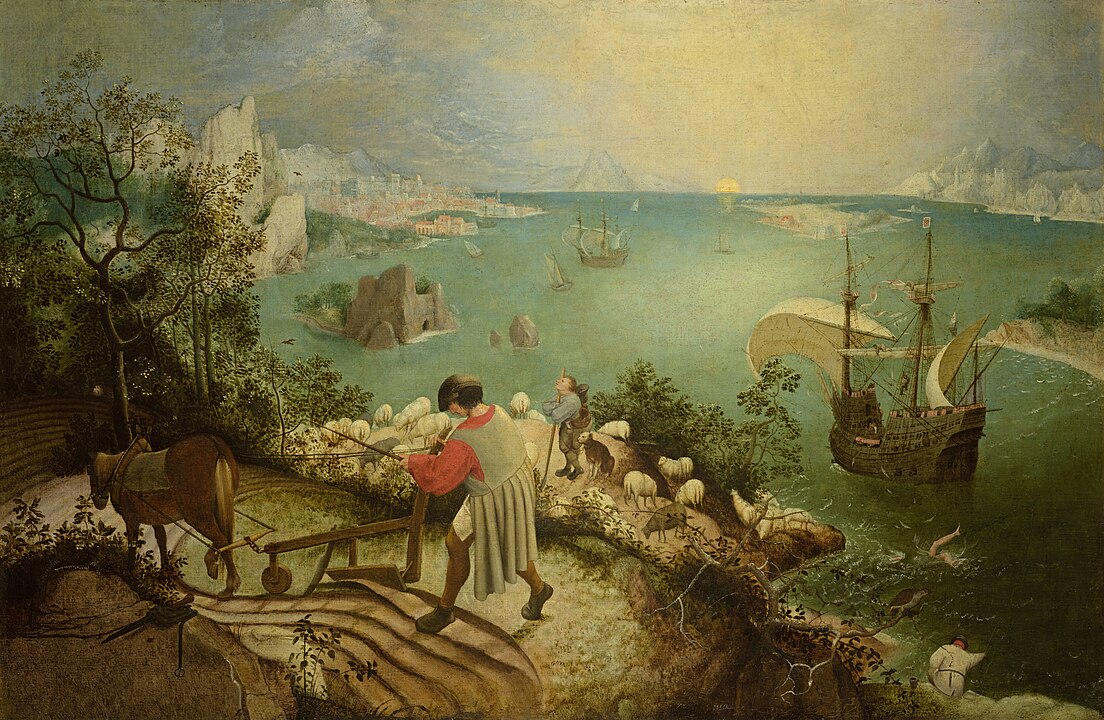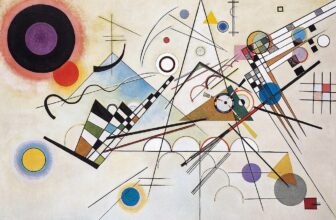
The Meaning of Landscape with the Fall of Icarus
Landscape with the Fall of Icarus, an enigmatic painting attributed to the Flemish Renaissance artist Pieter Bruegel the Elder, is one of the most intriguing and thought-provoking pieces in the history of Western art. The painting captures the tragic demise of Icarus, a character from Greek mythology, but does so in an unconventional manner that challenges traditional artistic norms. The interpretation of its meaning, themes, and moral lessons has intrigued art historians, poets, and philosophers for centuries. This article delves into the significance of the painting, its themes, current location, and the moral implications it conveys.
The Meaning of Landscape with the Fall of Icarus
At first glance, Landscape with the Fall of Icarus appears to be a serene and pastoral scene. A plowman toils in the foreground, a shepherd watches over his flock, and a fisherman sits by the water’s edge. Rolling hills and a vast sea stretch out in the background, with a bustling port suggesting commerce and daily life. Only upon closer examination does the viewer notice a pair of legs disappearing into the sea, an almost hidden reference to the fate of Icarus.
The painting’s meaning lies in this subtlety. Unlike conventional depictions of the myth of Icarus, which often emphasize his dramatic fall, Bruegel minimizes his presence, directing focus instead to the mundane activities of everyday life. This suggests that human suffering, even that of a figure as legendary as Icarus, often goes unnoticed by the world. His fall is reduced to an afterthought, overshadowed by the routine work of common people.
Bruegel’s interpretation reflects a broader philosophical perspective on human existence. The indifference of the world to Icarus’s fate speaks to the insignificance of individual tragedy in the grand scheme of life. The painting can be seen as a meditation on the ephemeral nature of glory and ambition, emphasizing that life goes on despite personal disasters.
The Themes of Landscape with the Fall of Icarus
Several key themes emerge from Bruegel’s masterpiece, each contributing to its rich and layered meaning.
1. Human Indifference and the Absurdity of Tragedy
One of the most prominent themes is the idea of human indifference. The plowman, shepherd, and fisherman are all preoccupied with their own tasks, seemingly unaware of Icarus’s fall. This stark contrast between the mythical and the mundane underscores how personal suffering often goes unnoticed by society. In this way, Bruegel presents a more grounded, almost cynical view of the world, one where people are more concerned with their own survival than with distant tragedies.
2. The Futility of Ambition
Icarus’s fall is a consequence of his hubris. Ignoring his father Daedalus’s warnings, he flew too close to the sun, melting the wax in his wings and plunging into the sea. The painting subtly critiques the dangers of overreaching ambition, portraying it as futile against the relentless continuity of daily life. Bruegel’s depiction suggests that while myths celebrate grand aspirations, reality often diminishes them to insignificance.
3. Nature’s Indifference to Human Affairs
The natural elements in the painting, rolling hills, the vast sea, and the golden sunlight, are unconcerned with the fall of Icarus. Unlike traditional depictions that dramatize the event, Bruegel’s version shows a tranquil landscape where nature remains unaffected by human triumphs and failures. This theme aligns with Renaissance humanist thought, which often explored humanity’s place within the natural world.
4. The Cycle of Life
Bruegel’s depiction of agricultural work and maritime activity highlights the cyclical nature of life. The plowman continues his work, symbolizing persistence and stability. This theme suggests that life moves forward regardless of individual success or failure, reinforcing the idea that personal aspirations are fleeting compared to the broader, ongoing rhythm of existence.
Where is Landscape with the Fall of Icarus Housed?
Currently, Landscape with the Fall of Icarus is housed in the Musées Royaux des Beaux-Arts de Belgique (Royal Museums of Fine Arts of Belgium) in Brussels. However, there has been some scholarly debate regarding whether the painting on display is an original Bruegel or a later copy. Some experts believe that the original may have been lost, while others argue that the version in Brussels remains an authentic work of Bruegel or at least one of his contemporaries.
Regardless of its exact provenance, the painting remains one of the most widely studied and admired pieces of Renaissance art, influencing countless artists, writers, and philosophers who have sought to interpret its meaning.
The Moral of Landscape with the Fall of Icarus
The painting’s moral lesson is subject to various interpretations, but a few central messages stand out.
1. The Unimportance of Individual Tragedy in the Grand Scheme of Life
Bruegel’s depiction suggests that life does not stop for individual suffering. Icarus, despite his grand ambitions, is barely noticed as he falls. The world moves on, indifferent to his fate. This can be seen as a reflection on the fleeting nature of personal ambition and tragedy.
2. A Warning Against Hubris
The Greek myth of Icarus is a classic cautionary tale against arrogance and the perils of ignoring wisdom. By minimizing Icarus’s presence in the painting, Bruegel reinforces the idea that reckless ambition leads not to glory but to irrelevance and oblivion.
3. The Beauty of Ordinary Life
Despite its somber implications, the painting also offers a celebration of everyday life. The plowman, shepherd, and fisherman each represent stability and continuity. In contrast to Icarus’s downfall, their work sustains life and contributes to society. This moral lesson emphasizes the value of diligence, responsibility, and the often-overlooked beauty of simple, steady existence.
Landscape with the Fall of Icarus remains one of the most powerful and enigmatic paintings of the Renaissance era. Through its unconventional portrayal of Icarus’s myth, Bruegel challenges traditional artistic and philosophical perspectives, offering a profound meditation on human ambition, fate, and the indifference of the world. The painting’s themes of human indifference, the futility of ambition, nature’s detachment, and the cycle of life continue to resonate with modern audiences.
Housed in the Royal Museums of Fine Arts of Belgium, the painting invites viewers to reconsider how they perceive tragedy and the meaning of individual aspirations. Ultimately, Bruegel’s masterpiece serves as both a cautionary tale and a reflection on the resilience of everyday life, making it one of the most enduring works in the history of art.





